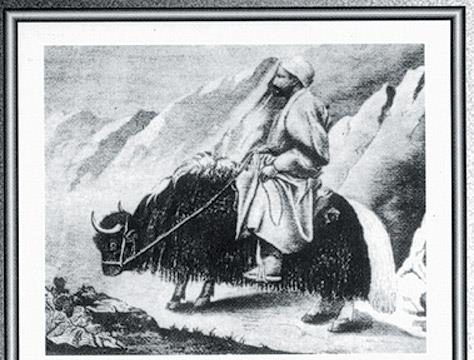As the Great Game was raging over much of Asia in the mid-nineteenth century, the British Empire faced two distinct problems. The big one was the Russian Empire which was fast gobbling land in the Central Asian steppes, inching ever closer to India. The other was the vague political status of Tibet, a land that was a literal blank on Survey of India maps. In 1862, under Captain T.G. Montgomery of the Survey, Indians started being trained in clandestine surveying techniques. Called ‘pundits’, they were the unknown stars of the Game, carrying out audacious feats of espionage and mapping over the next four decades.
One of the best known was the scholar Sarat Chandra Das. A headmaster of the Bhutia Boarding Schoolin Darjeeling, he immersed himself in Tibetan studies, even learning the language, while training local Nepali and Tibetan youth to be future pundits. In 1879, he obtained an invitation from the Teshu Lama and visited eastern Tibet, gathering a wealth of manuscripts, making contacts and preparing a detailed map of the region, as well as sketches. He repeated this feat in 1881, this time travelling all the way to Lhasa, and even meeting the Dalai Lama. He was later immortalised as Hari Chander Mookerjee in Rudyard Kipling’s Kim. His own Journey to Lhasa and Central Tibet is a classic of exploration.




